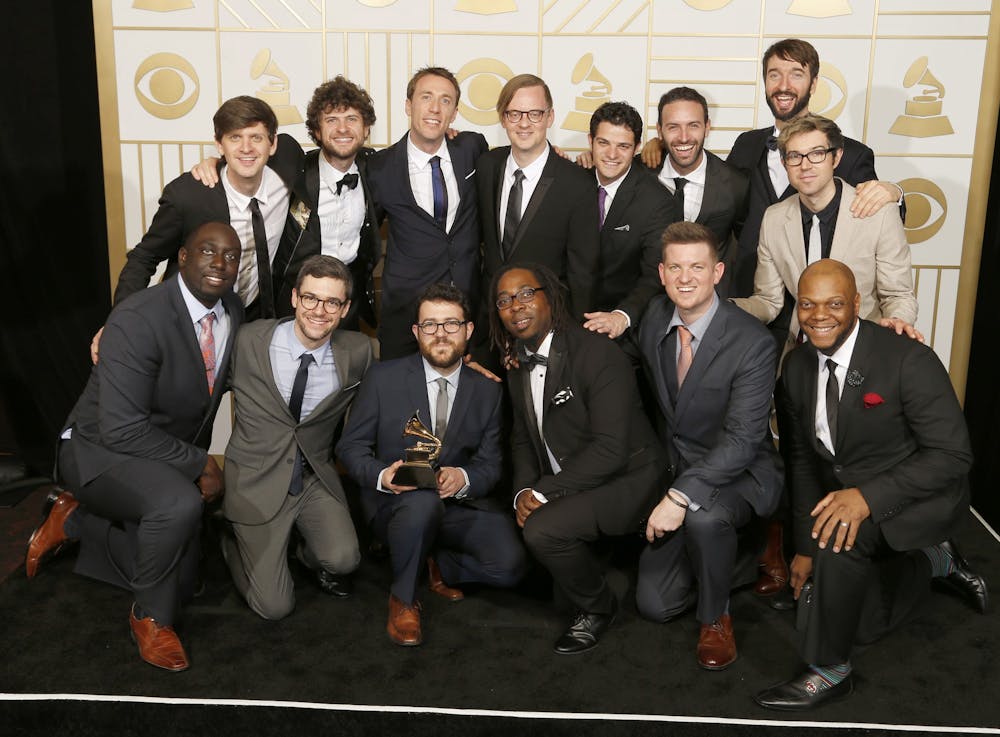Spotify's statistics show I mostly listen to jazz and hip-hop, which doesn't come as a surprise. What did come as a surprise was, given my taste of music, the musicians I listen to are primarily white. If I had listened to mostly pop or rock I wouldn't even question it, but this observation left me with a strange feeling and even more questions.
My most listened to artist, according to the app, was the group Snarky Puppy. In reality, it's better described as a series of 25 members that switch in and out depending on the song they're playing. The band is a contemporary jazz fusion group led by Michael League, a white man that studied jazz at the University of North Texas where the group started.
There's an obvious reason why I listen to them: the music they make is good. Really good. Good enough to listen to more than any other artist in my rotation, apparently. But when watching one of their performances online, a comment that beneath the video stuck with me ever since I saw it years ago: "You ain't never heard gentrification sound this good."
I laughed because there was truth to the statement, but it's now burned into my mind and I remember it whenever I listen to them. It's important to note while Snarky Puppy is made up of a very diverse group of people, it's still led by a white man playing jazz. I listen to them more than other contemporary jazz artists, even the artist I consider to be my favorite—Kamasi Washington, a Black saxophonist. He wasn't even ranked second, he was ranked third.
In second place was another jazz-adjacent group, BadBadNotGood. This band is made up of exclusively white guys and a sizable portion of their discography is covers of popular hip-hop songs made by Black artists. Along with that, these men have collaborated with some of the biggest names in modern hip-hop such as Ghostface Killah, Denzel Curry and Tyler, the Creator.
I closed Spotify and decided to watch a video instead and the first thing recommended to me was something from hip-hop producer Kenny Beats. Kenny Beats is also white and has collaborated with Zack Fox, Rico Nasty, Gucci Mane and Vince Staples and is, in my opinion, one of the best producers still making music. He's had a hand in making plenty of the most popular rap albums of the last few years.
From what I can see, I can explain each of these artists' popularity individually. Snarky Puppy has a fanbase of mostly music students that love theory that goes behind their songs and BadBadNotGood went viral after Tyler, the Creator showcased their talents. Kenny Beats has a successful YouTube series where he brings over rappers to his studio to make quick little songs, with videos regularly reaching more than a million views. What I cannot understand is the pattern at play here.
White folk in Black music have always been there. One of the biggest names in jazz of all time was Benny Goodman. He was known for being one of the earliest to have a diverse band of white and Black people, only caring for the quality of the musician. But how did he come to decide his ear knew what was best in a genre he had no hand in creating?
The jazz scene back in the 20th century saw white bandleaders, such as Benny Goodman, Glenn Miller and Tommy Dorsey, have tons of success, not necessarily at the expense of black bandleaders. But, some kind of bias had to have been there given the time. While textbooks would tell you that the greatest advancements in the genre were the result of Black artists, the white artists were the ones with financial and critical success —a kind of success that was never found for Black jazz artists.
Is it any different than what we see now? How often is Post Malone or Eminem cited as a successful hip-hop artist at the implicit expense of a Black rapper? They surely worked hard to hone their craft, just as Benny Goodman had, but could it be said that they worked as hard as Black contemporaries? Or did they see that there was a space not made for them, and decided to enter it anyways?
Even today, in my relative niche of modern jazz, white musicians still infiltrate. They're not barred from entry or even expected to avoid this space, but it's expressly not their space. They don't own this space, it wasn't built for them. It feels akin to a stranger in the house, a house built to protect and nurture our own. This stranger would be at home anywhere else, yet they still knock on our door.




